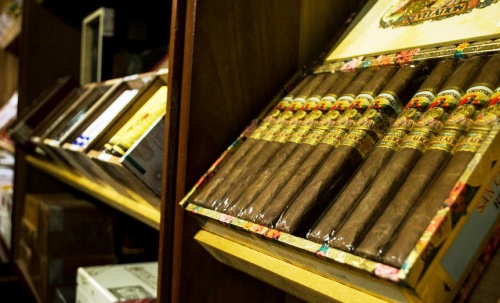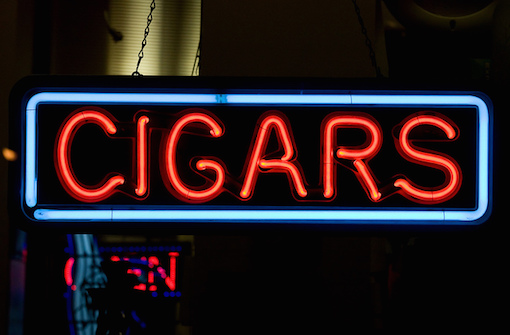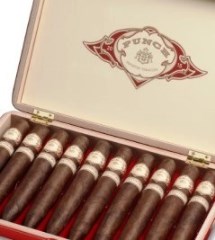Commentary: Good, Great, and Not-So-Hot Cigars (Part 2)
4 Feb 2015

One of the most difficult distinctions in judging a cigar is separating the cigar from the cigar experience.
For example, the other day I spent several hours on the phone with an insurance company trying to straighten out my Medicare application. I was smoking a cigar but I can’t even recall what it was. But I assure you it could have been a $500 Davidoff Oro Blanco and I wouldn’t have enjoyed it.
On the other hand, I’m confident most of us can recall a smoke in a great environment that seemed wonderful, only to disappoint when returned to less stellar conditions.
That is one reason why, when reviewing a cigar, we smoke more than one, and why we often remark on the circumstances if they’re anything out of the ordinary.
Speaking of our reviews, you’ll find an explanation of the StogieGuys.com system here and an archive of those cigars we’ve judged to be the best here.
When assessing a cigar, one of the most difficult things to do is to recognize your personal preferences. Not eliminate them, because that’s impossible. But you need to be aware of them.
The poster child for this is, of course, Macanudo. There’s no shortage of smokers who’ll tell you what a lousy cigar Macanudo is. Of course, it’s nothing of the sort. You may not enjoy it—you may not be able to stand it—but it’s by no stretch of the imagination a bad cigar. It’s a mild stick with remarkable consistency, excellent construction, and a nearly unparalleled sales record.
Since cigars are an object of pleasure and enjoyment, there’s no standardized scale on which they can be measured. Everyone’s tastes are different, and most people’s tastes evolve and change as they continue to smoke cigars. Cigars I once thought extraordinary I now find quite ordinary; if you’ve been smoking a while, I imagine that’s true for you as well.
A truly great cigar, for me, creates an almost transcendent experience, one where you are nearly lost in the act of smoking. I know that sounds pretty highfalutin for burning a bunch of rolled up leaves, but I can feel it when it happens.
But that isn’t all it takes. To be great, a cigar must perform that way consistently. Cigar people will tell you making one great stick isn’t nearly as tough as making them that way again and again and again.
Construction plays a role, too. The draw must be right, the burn even and complete.
Personally, I don’t assign a lot of importance to aesthetics, though they are usually good when the cigar is top-flight. But I wouldn’t let an ugly band—or no band—weigh heavily, just as the choice of a glossy, lacquered box or simple cardboard makes little impression.
When I’m reviewing cigars my goal is simple: provide information and impressions to help you make choices.
I prefer smoking and writing about good cigars far more than dissing bad ones. And when I come across a great one, it’s even more fun. I’m eager to spread the good news. Fortunately, there are more and more opportunities to do just that.
photo credit: Flickr


 As a full-blown fan of cigars coming from Rafael Nodal and Hank Bischoff, I always expect good things when I light a cigar from their Boutique Blends. So it was no surprise that I liked La Bohème, even though I was a bit unsure of what to expect from the small Mimi. After all, even Nodal has said he wasn’t too sure about it at first.
As a full-blown fan of cigars coming from Rafael Nodal and Hank Bischoff, I always expect good things when I light a cigar from their Boutique Blends. So it was no surprise that I liked La Bohème, even though I was a bit unsure of what to expect from the small Mimi. After all, even Nodal has said he wasn’t too sure about it at first.

 1) Punch Rare Corojo will be back at tobacconists starting February 16, including two new vitolas. The first, El Diablo (6.5 x 66), will be a permanent addition to the annual release. The second, Rare Lapiz (6.75 x 56), will only be available this year, and only to select retailers. “Punch Rare Corojo started the trend of seasonal cigars, and each year we’re pleased with the response to this annual collection,†said Ed McKenna, senior brand manager for Punch. “Given the range of frontmarks and the addition of Rare Lapiz to this year’s lineup, we are confident that Punch Rare Corojo will sell out quickly.†The Rare Corojo blend includes an Ecuadorian Sumatra wrapper, a Connecticut Broadleaf binder, and a filler blend of Nicaraguan, Honduran, and Dominican tobaccos.
1) Punch Rare Corojo will be back at tobacconists starting February 16, including two new vitolas. The first, El Diablo (6.5 x 66), will be a permanent addition to the annual release. The second, Rare Lapiz (6.75 x 56), will only be available this year, and only to select retailers. “Punch Rare Corojo started the trend of seasonal cigars, and each year we’re pleased with the response to this annual collection,†said Ed McKenna, senior brand manager for Punch. “Given the range of frontmarks and the addition of Rare Lapiz to this year’s lineup, we are confident that Punch Rare Corojo will sell out quickly.†The Rare Corojo blend includes an Ecuadorian Sumatra wrapper, a Connecticut Broadleaf binder, and a filler blend of Nicaraguan, Honduran, and Dominican tobaccos. The Nebraska Supreme Court found the exemptions violated the state’s prohibition on special legislation, or laws that are not equally applied in pursuit of the law’s stated goal. The court found that since the law’s goal was to protect employees from secondhand smoke, there was no reason why it shouldn’t also “protect” cigar bar employees.
The Nebraska Supreme Court found the exemptions violated the state’s prohibition on special legislation, or laws that are not equally applied in pursuit of the law’s stated goal. The court found that since the law’s goal was to protect employees from secondhand smoke, there was no reason why it shouldn’t also “protect” cigar bar employees.
 Patrick Ashby
Co-Founder & Editor in Chief
Patrick Ashby
Co-Founder & Editor in Chief Patrick Semmens
Co-Founder & Publisher
Patrick Semmens
Co-Founder & Publisher George Edmonson
Tampa Bureau Chief
George Edmonson
Tampa Bureau Chief